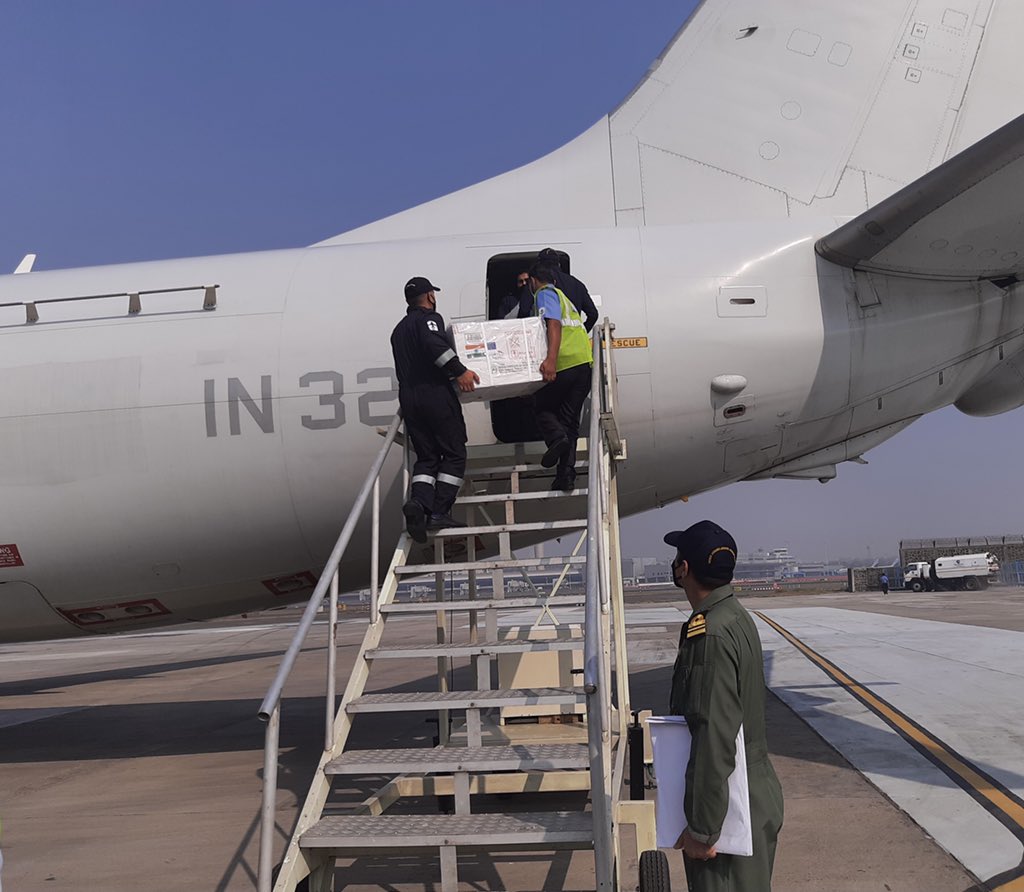When the conflict in Manipur made headlines in the year 2023, with footage of houses being burnt down, gory images of killings, harassment of women making news, including security forces facing a backlash, the entire nation gasped to understand why it had happened, as we watched the horrors that sent chills down our spines. Manipur has presently become one of the most volatile and conflict-ridden states of India. An approach to restore stability and peace needs a deep understanding of the state historically, politically, socially, and economically.
Historically, Manipur, before its merger with India after its independence, was largely a kingdom covering huge areas of Myanmar under its rule. Ruled by Meitei kings, largely in the plains of Imphal, the influence of their kingdom extended to the hills, which were mainly under the control of tribal chieftains. The fate of this small kingdom eventually took a massive turn when His Highness, Maharaja Bodhchandra Singh, after independence, signed a merger agreement with the Governor-General of India on September 21st 1949. This incident, often believed to have been forcibly initiated, has been criticized for generations, bringing about the rise of insurgent groups that oppose it – a call for revolution founded on the separatist idea of gaining freedom from India. Manipur, despite its numerous tribes, is largely inhabited by three major indigenous communities, namely the Meiteis, Nagas, and Kukis. While the Meiteis reside in the plains of Imphal, the tribal communities find their refuge in the hills of Manipur. Looking deeply into the characters of each community, they are often bound by a fragile relationship of togetherness, for which insensitivity can lead to escalation. In its vibrant diversity of culture and traditions, Manipur faces multiple levels of challenges arising out of insecurities, ill will and resentment, including a state of helplessness. The plains of Manipur have their unique problems. The Meiteis of the plains have often expressed hostility towards the Indian state. These have been rooted since the arrival of the Marwaris and Vaishnavism which peaked during the 18th century. To this day, the Meiteis have reacted strongly against migrant workers from other states, since they are strongly of the opinion that the workers from other states have the potential to take over their economy, which can rob them of their jobs, wages, and land. A strong need for ethnic identification has often been a major driver of social movements and conflicts occurring in the plains of Manipur. These have led to ongoing calls by the Meitei community for the abandonment of the Bengali script, while simultaneously recognizing Meitei Mayek as the official script for writing the Meitei language. Furthermore, other factors include the tensions surrounding the ILP movements and ongoing calls for the inclusion of the Meitei community in the Scheduled Tribes list. It was also necessary to deal with the rise of several extremist ethnic groups who are often known to take the law into their own hands. Meitei insurgent groups have often perceived India’s rule of Manipur as a form of colonization and have always acted strongly against India’s agenda. There has been an imposition of a ban on Hindi films, a boycott of national holidays, and a hostile treatment of the armed forces.
While on the one hand, their claims of seeking justice for the unfair treatment meted out by the Indian Government, the insurgent groups of the tribal region of Manipur have their ethnic centric agendas of separatism from the plains of Manipur for their separate unit or administrations. The Naga insurgent groups have faced challenges in feeling a strong sense of belonging within the state, which has led them to demand a separate Nagalim through militant outfits like the NSCN-IM, similar to the demand made by the Kukis for a separate administration in the state. A lot of disdain and insecurity among the tribal people also stems from their strong accusations against the concentration of development in the plains of Manipur and the corrupt practice of limiting necessities in the hills. While a committee was established in 2021 to examine the developmental funds of hilly areas, the report suggested several essential points, including a steady increase in the release of funds since 2018 and streamlining development through a participatory government by providing more representative opportunities. Ostracization, mob violence, and moral policing are also becoming an easy tool for ethnic vigilante groups to uphold power and authority. The marginalized sections of society have often reaped the fruits of this tyranny. Bandhs, blockades, and protests often bring the Manipuri society to a standstill. This becomes a stumbling block for the state’s economic growth and development, while also leaving academics frustrated with its volatile environment. Businesses fail to grow not only due to the state’s volatile nature, but also due to heavy extortion conducted by militant groups across the hills and the valleys. According to the 2011 census, an increasing number of people have been leaving the state in search of better job opportunities. About 25% of the out-migration from Manipur has been recorded to date. Manipur, along with other northeastern states, has the highest number of outflows per inflow, offering better growth opportunities. According to a study, an average of more than three people migrate outside the state for a migrant. The increase in outflow due to work, education, and other opportunities speaks volumes about the nature of the state. A state with huge prospects and a sense of pride, India has produced numerous remarkable sportspersons, boasting scenic beauty, including the Dzuko Valley and the largest freshwater lake, with its unique floating phumdis. Additionally, it is home to a diverse array of flora and fauna, including the Shirui Lily and the Sangai, which are unique to the region. The state is also a crucial window for India’s Act East Policy, which aims to strengthen ties with Southeast Asia. Increasing turmoil, if deeply rooted, can lead to severe consequences. We should be aware that Manipur, whose border is shared with the current junta rule of Myanmar, can be preyed upon by international powers aiming to disarm India’s geopolitical position with their influences, thereby causing huge national security concerns. Huge influx of immigrants should be kept in check, with vigilant border security playing a crucial role. With its proximity to the Golden Triangle, Northeast of India, Manipur has been facing rising concerns related to narco-terrorism, too. According to data released by the state government of Manipur, the MARSAC, or the Manipur Remote Sensing Application Centre, reported that around 11,288 acres of the total area were under illegal poppy plantations in the year 2023-2024. While a series of actions have been taken, including the destruction of such cultivation, which has been ongoing, narcoterrorism has seeped deep to inflict enough damage.
Last year, in November, three Meitei women and three children, including an eight-year-old child, were abducted from their homes by suspected militants only for their bodies to be thrown down the Barak river, as the conflict escalated in Jiribam. The same year, a group of males returning home were beaten by armed miscreants of the same community and threatened with blank fire after being allegedly questioned if they had joined any group supporting the cause of war. The victims were students studying outside the state. They had just returned to Manipur and had no ties with any armed or militant groups.
Renowned business owners and entrepreneurs are often vocal about their stance against excessive extortion. The radars of groups and organizations that frequently take matters into their hands are becoming increasingly concerning, as they often involve the restriction of freedom and rights, including a threat to life for ordinary citizens who dare to speak against them.
With the current President’s Rule, Manipur relies on hope, at the bare minimum, today. India needs to enhance the coordination of its intelligence for national security, given the volatile nature of the state. A resilience against anarchy and chaos, India is known for its stance against terrorism throughout the world. India has consistently proven, since time immemorial, that the state will not tolerate terrorism of any kind on its soil. Manipur needs to be looked at in this regard on a microscopic level. Lastly, effective governance, which focuses on the speedy delivery of policies from the grassroots, is essential. Policies such as UDAAN, the National Bamboo Mission, and the Swadesh Darshan Scheme need to be leveraged to their full potential. With the Jiribam Railway project already taking shape, the Imphal airport, which aims to expand its connectivity to South-East Asia, needs to maintain infrastructure streamlining in check. The soft power narrative at the micro level is also necessary for achieving growth and attaining the status of becoming the world’s third-largest economy. India’s diversity can be India’s biggest strength. Manipur boasts a diverse culture, rich traditions, and vibrant festivals. Known for its sportsmanship, the land has taken the global stage in terms of culture and beauty. Manipuri art, including the acclaimed Manipuri cinema, is rapidly gaining popularity across the rest of the Northeast region. As the saying goes, “Where there is a will, there is a way”, a state like Manipur with huge potential even to shape the geopolitical stance of the nation, just needs a will of possibility.
The views and opinions expressed here belong solely to the author and do not reflect the views of BlueKraft Digital Foundation.







